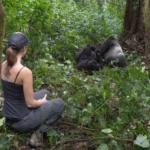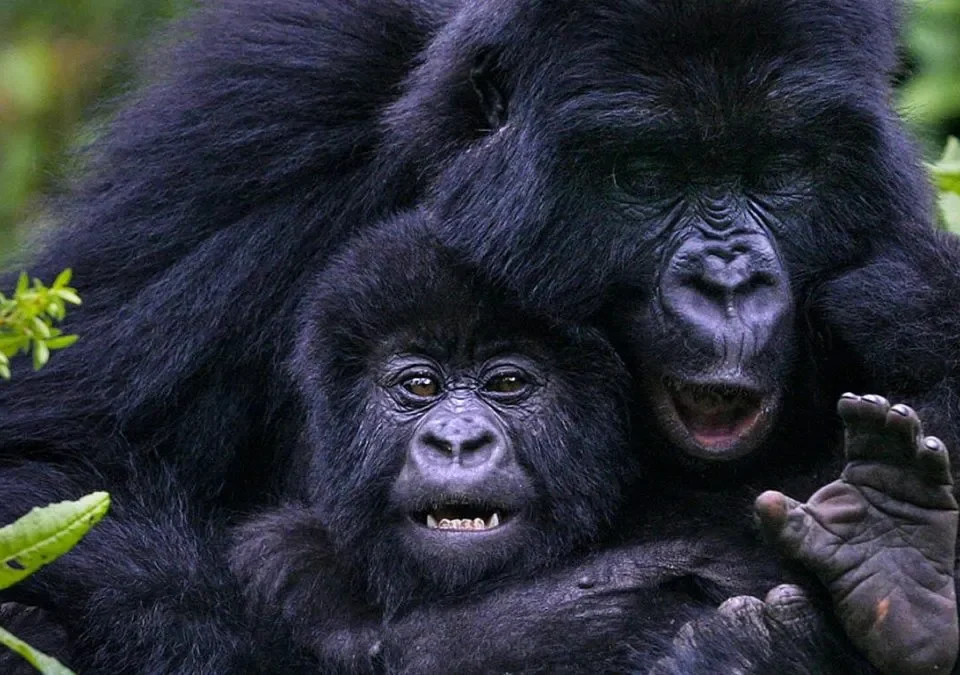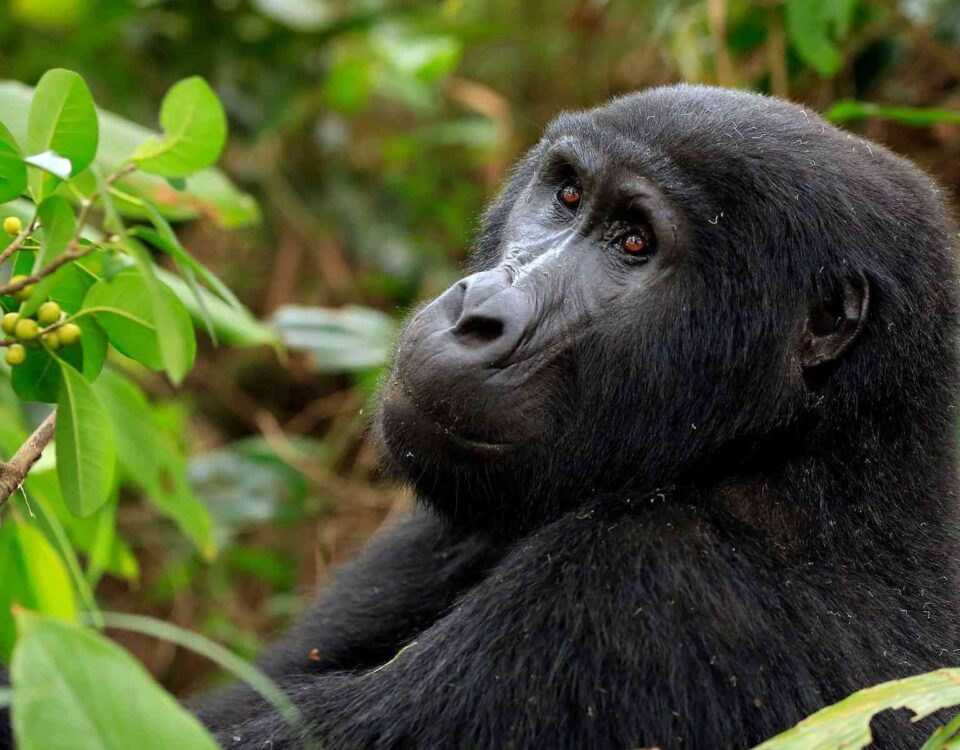
How Many Days for Gorilla Trekking in Uganda?
March 20, 2025
How to Prepare for Gorilla Trekking?
March 23, 2025How Hard Is the Gorilla Trek in Rwanda?
Gorilla trekking in Rwanda is one of the world’s most unique and exhilarating wildlife experiences. Nestled within the lush landscapes of the Volcanoes National Park, Rwanda offers trekkers the rare opportunity to get up close to the endangered mountain gorillas in their natural habitat. As thrilling as this experience is, many travelers wonder, How hard is the gorilla trek in Rwanda?
In this guide, we’ll break down the physical demands of the trek, the factors that influence the difficulty, and offer tips to help you prepare for an unforgettable adventure. Whether you’re an avid hiker or someone who enjoys an occasional stroll, it’s essential to understand the challenges of the trek, so you can fully enjoy your once-in-a-lifetime encounter with the gorillas.
Overview of Gorilla Trekking in Rwanda
Gorilla trekking in Rwanda takes place in Volcanoes National Park, one of the few places in the world where mountain gorillas can be observed in their natural environment. The park, located in the northwestern region of Rwanda, is part of the Virunga Mountains, a chain of volcanoes shared by Rwanda, Uganda, and the Democratic Republic of Congo. This UNESCO World Heritage site is home to about 400 mountain gorillas, making it a crucial sanctuary for the conservation of these critically endangered animals.
The gorillas live at varying altitudes within the park, and their location can influence the difficulty of the trek. The trekking process is carefully regulated to ensure both the safety of the trekkers and the protection of the gorillas. While trekking itself is not a technical challenge, it does involve physical exertion due to the steep terrain and dense forest.
Understanding the Terrain and Elevation
Volcanoes National Park is known for its rugged landscape. The terrain consists of steep hills, dense forests, and occasionally, volcanic rock. The park’s elevation ranges from about 2,500 meters (8,200 feet) to 4,507 meters (14,787 feet), and the gorillas are typically found at altitudes between 2,500 meters and 3,000 meters.
Steep and Uneven Trails
The trekking paths are not smooth or well-maintained hiking trails like you might find in other national parks. Instead, the trails can be steep and slippery, especially during the rainy season. Expect to climb and descend hills, navigating through thick vegetation, muddy terrain, and sometimes rocky paths. The effort required depends largely on the gorilla family you are assigned to visit and where they are located within the park.
The Rainy Season: A Challenge for Trekking
Rwanda’s two rainy seasons—from March to May and from October to November—can make the terrain even more challenging. During this period, trails can become slippery and muddy, adding to the difficulty of the hike. However, the rain also brings lush vegetation, which contributes to the dense jungle environment that the gorillas call home.
While the rainy season increases the challenge, trekking still goes on as scheduled. Trekkers are advised to be prepared for wet conditions with waterproof clothing and proper footwear. Guides provide trekking poles to assist with balance, and porters are available to help carry bags and offer additional support.
How Physically Demanding Is the Trek?
Gorilla trekking is a physically demanding activity, but it is not impossible for most people. The difficulty of the trek depends on factors such as the distance to the gorillas, the terrain, your fitness level, and the weather conditions on the day of the trek.
Fitness Level and Preparation
While the trek is not considered an extreme challenge, it does require a certain level of physical fitness. If you are accustomed to hiking or walking on uneven terrain, you’ll find the trek manageable. However, for those who do not engage in regular physical activity or who are not used to hiking on steep, rugged paths, the trek could be more strenuous.
To prepare for the trek, it’s a good idea to do some light physical conditioning before your trip. This could include hiking, walking, or even spending time on a treadmill with an incline setting to help simulate the steep inclines you’ll face. This preparation will help you build stamina and improve your ability to handle the physical demands of the trek.
Duration of the Trek
The length of the trek can vary depending on where the gorillas are located that day. The average trek lasts about 2 to 3 hours, though it can be longer if the gorillas are located further from the park headquarters. Some trekkers may have to walk for 4 to 5 hours, while others may only hike for 1 hour if the gorillas are nearby.
It’s important to note that the Rwanda Development Board (RDB) limits the number of trekkers per group to 8 people, ensuring that the groups are small and manageable. This limitation also helps with keeping the trek enjoyable and efficient. Once you reach the gorillas, you will have one hour to observe them in their natural environment.
Guided Trekking for Safety and Support
Trekking in Volcanoes National Park is always done in groups and accompanied by experienced guides and armed park rangers. The guides are experts in gorilla behavior and the terrain, and they are trained to ensure the safety of both trekkers and gorillas. Rangers are armed to protect both the gorillas and trekkers from any potential threats, though encounters with dangerous wildlife are rare.
Trekking Support: Porters and Equipment
For those who may need extra assistance during the trek, porters are available to help with carrying bags, providing support on difficult terrain, and offering a helping hand if needed. Hiring a porter is a great way to support the local community, and it also allows you to focus on the trek itself without worrying about heavy gear.
Rwanda’s professional guides provide trekking poles, which can be extremely helpful for maintaining balance on uneven paths. The park also provides essential safety briefings before the trek, ensuring that all trekkers are well-prepared for the physical demands ahead.
How to Make Your Trek More Comfortable
While the trek itself can be physically demanding, there are several ways to make the experience more comfortable:
Wear Proper Gear: Sturdy hiking boots, comfortable clothing, and waterproof gear are essential for tackling the muddy and sometimes wet conditions of the trek.
Bring the Right Equipment: In addition to waterproof clothing, it’s advisable to bring a rain jacket, sunscreen, a hat, and a camera for capturing the experience (while adhering to park rules).
Physical Conditioning: Pre-trip conditioning can help you better handle the physical demands of the trek.
Stay Hydrated: Bring water and snacks to keep your energy levels up during the trek.
Conclusion: Is the Gorilla Trek in Rwanda Hard?
Gorilla trekking in Rwanda is a challenging yet achievable experience for most people. The trek involves hiking through steep, uneven terrain, which can be physically demanding, especially for those who are not accustomed to walking long distances on rugged paths. However, with proper preparation, a reasonable level of fitness, and the guidance of professional park rangers and guides, the trek is manageable and incredibly rewarding.
At Wild Village Safaris, we understand that each trekker’s experience is unique, which is why we offer personalized guidance to help you prepare for your gorilla trekking adventure. Whether you’re an avid hiker or a first-time trekker, we will ensure that you have the necessary support to make your Rwanda gorilla trek unforgettable.
Are you ready to take on the challenge and encounter Rwanda’s majestic mountain gorillas? Contact Wild Village Safaris to plan your trekking experience today!



